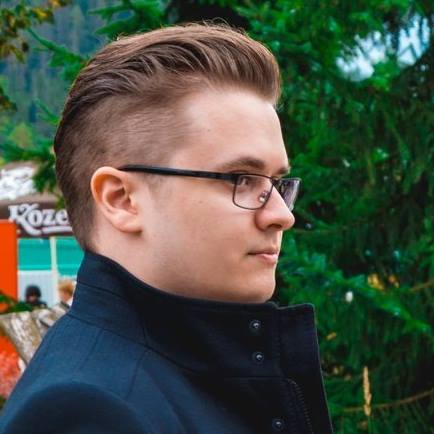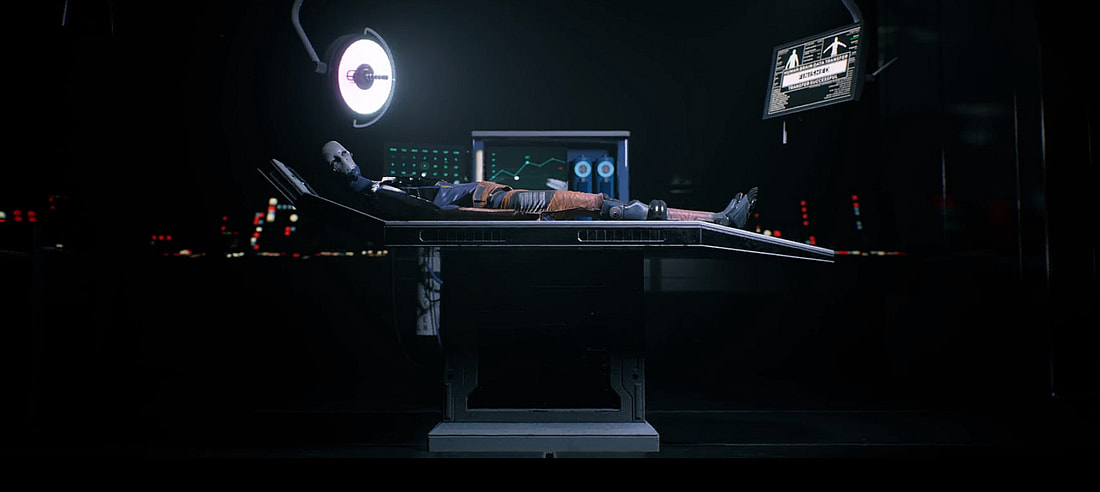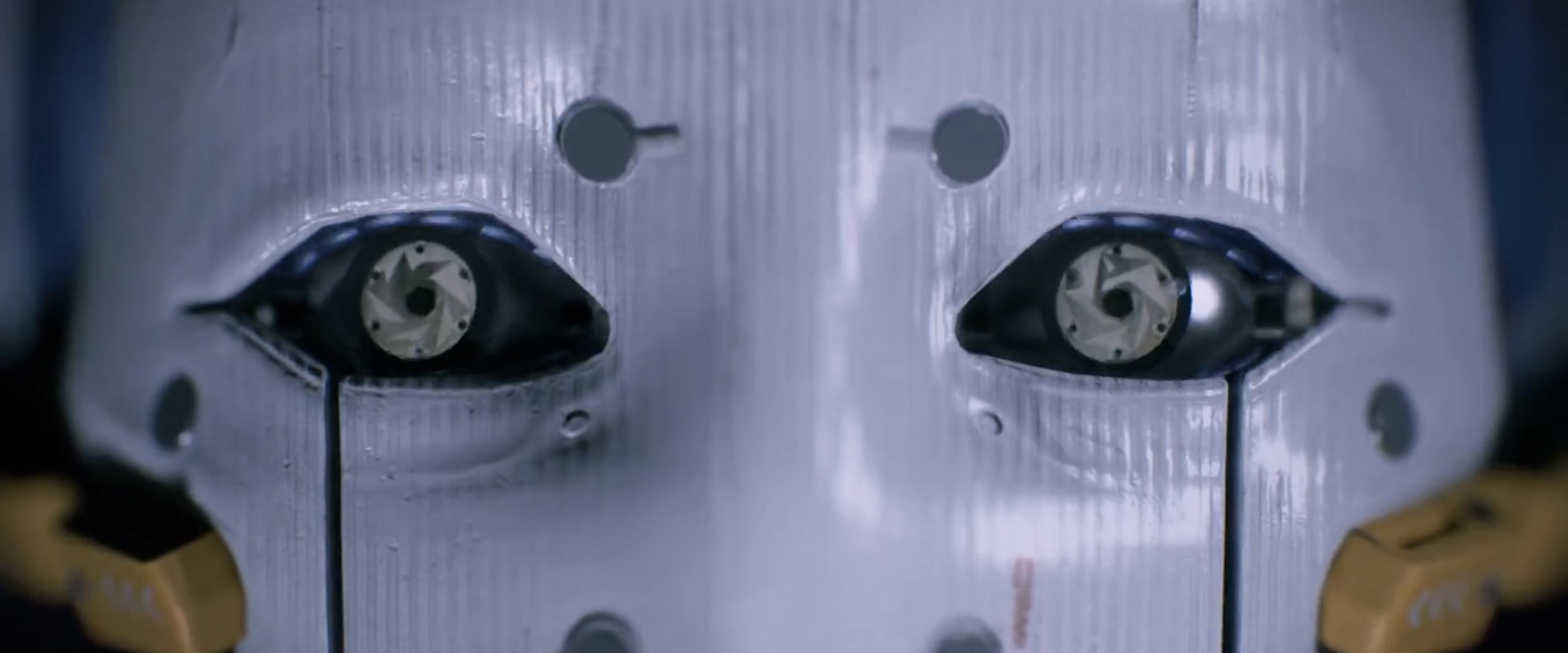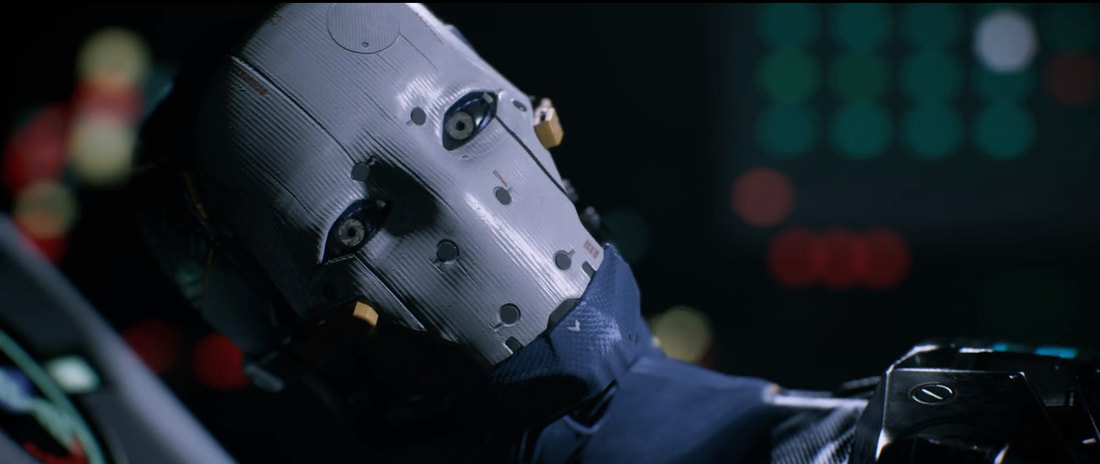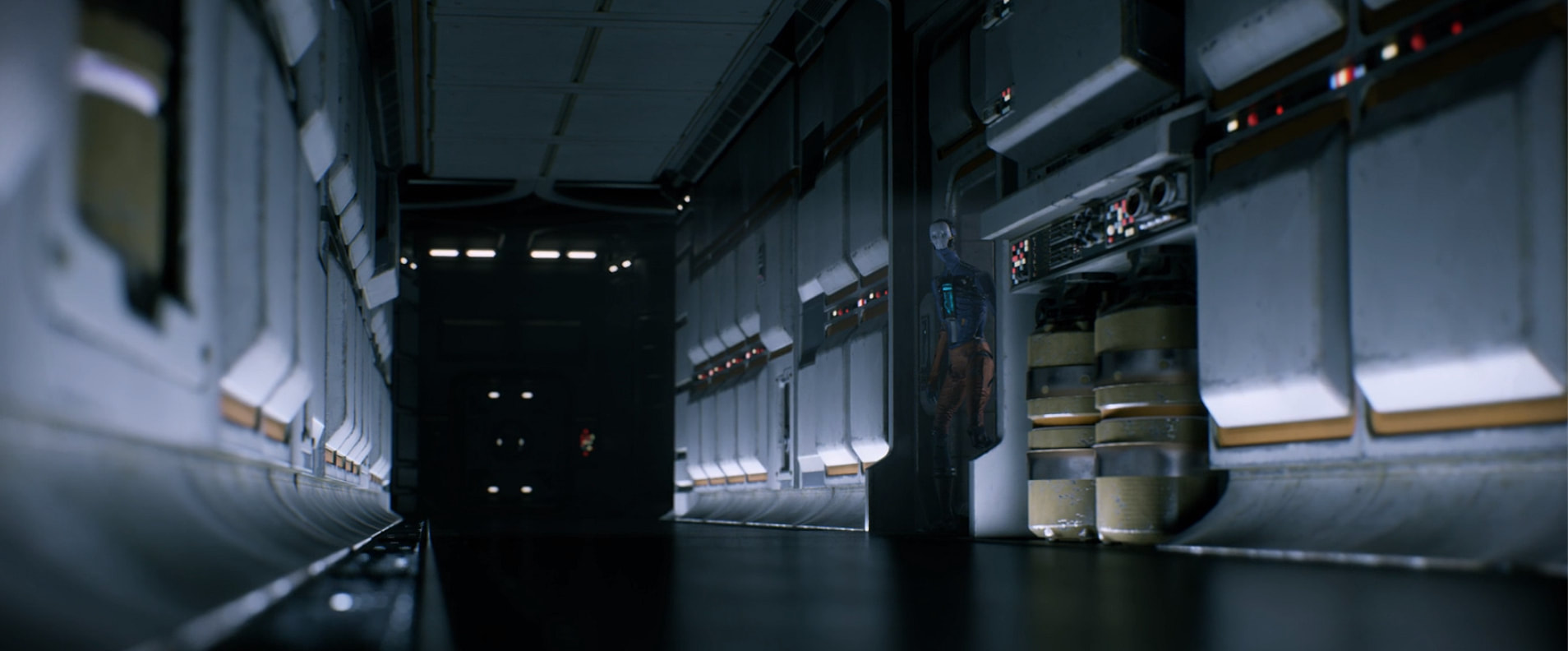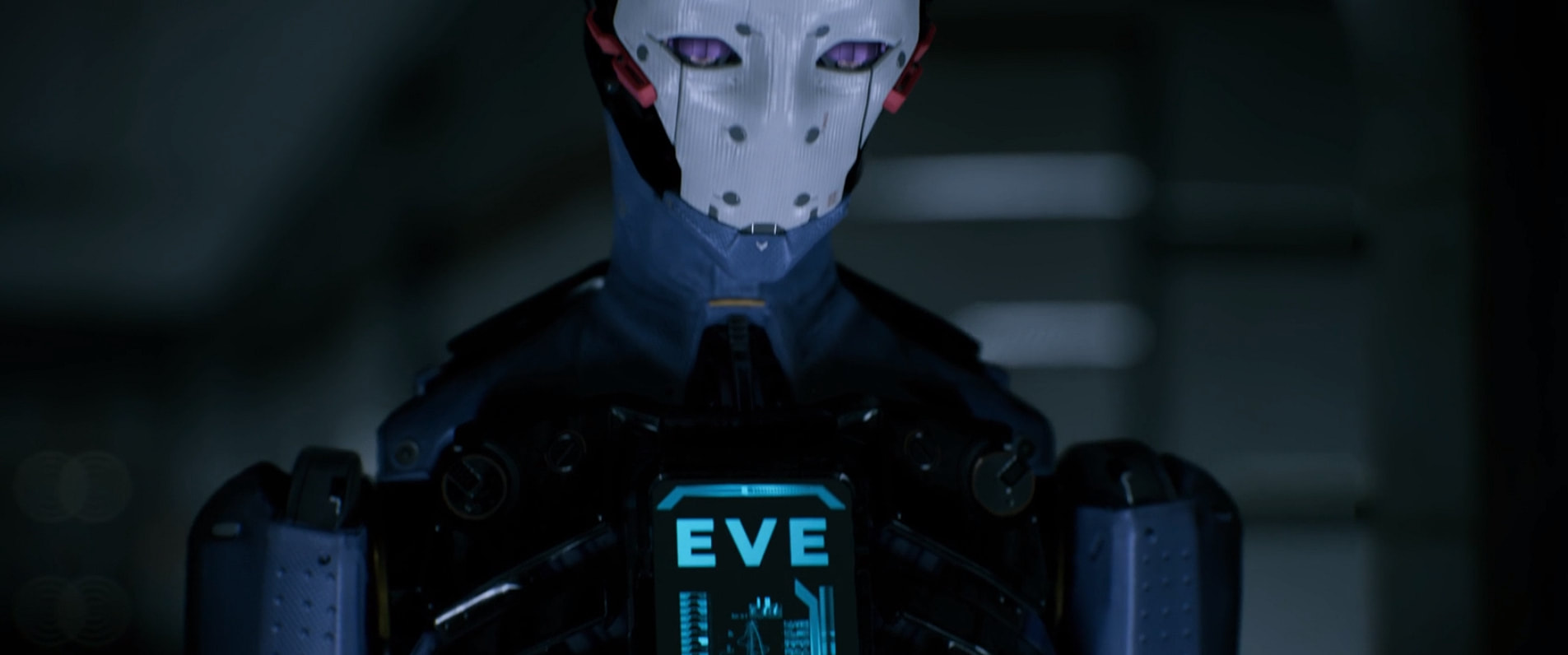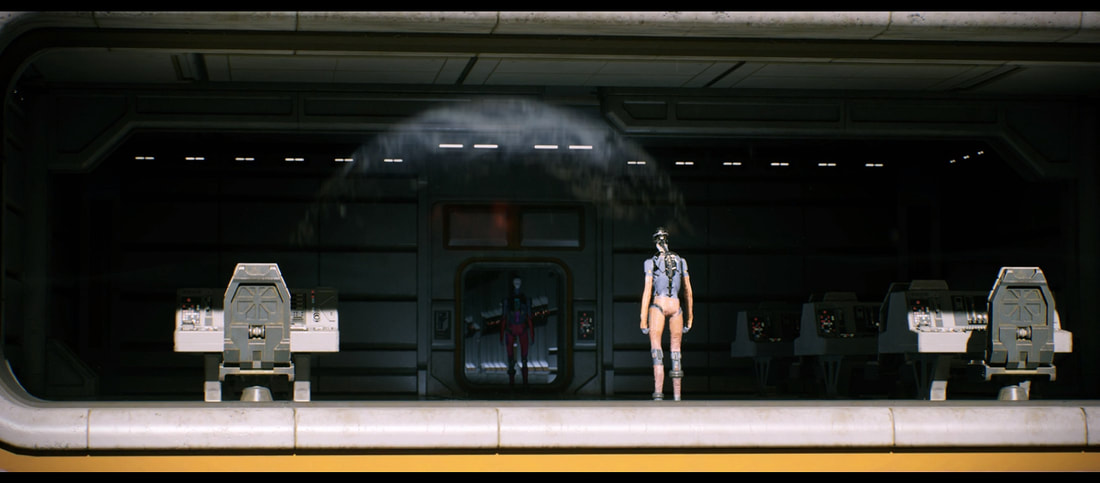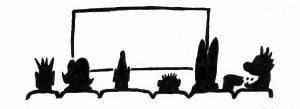Sebastian Kuder on making
Adam and Eve Mk II
Adam and Eve Mk II
Please tell us a little about yourself and your filmmaking. I see in IMDb that you have worked in film as cinematographer, director, animator and much more. Which do you prefer?
I’m a young Polish filmmaker, living in the UK, with passion and interest in 3D and real-time technologies (Such as Unreal Engine 4, which I used to make Adam and Eve Mk.II)
I think I love being a director and a cinematographer equally and it would be hard for me to decide which one I prefer. Everything else I do, like editing and animating, mostly comes from the fact that we worked in small teams at Escape* (or by myself, like in the case of Adam and Eve) and so everyone did more than just one thing. I definitely enjoy editing and animating, but if I could, I would love to have a group of Animators and 3D Artists doing the work for me, ha ha.
* Escape Studios is a visual effects academy offering short courses, undergrad and postgrad courses
I’m a young Polish filmmaker, living in the UK, with passion and interest in 3D and real-time technologies (Such as Unreal Engine 4, which I used to make Adam and Eve Mk.II)
I think I love being a director and a cinematographer equally and it would be hard for me to decide which one I prefer. Everything else I do, like editing and animating, mostly comes from the fact that we worked in small teams at Escape* (or by myself, like in the case of Adam and Eve) and so everyone did more than just one thing. I definitely enjoy editing and animating, but if I could, I would love to have a group of Animators and 3D Artists doing the work for me, ha ha.
* Escape Studios is a visual effects academy offering short courses, undergrad and postgrad courses
I see from the Escape Studios website that Adam and Eve: Mk II was made towards the end of your course there. Did you have a free hand to make what you wanted or were there constraints?
The project was of course supervised by our teacher, but Adam and Eve was made for a module at Escape Studios called ‘Specialism’ in which we can choose what we want to do and what we want to be graded on. So, for people who, for example, wanted to become Storyboard Artists, they would draw and storyboard a sequence. In my case, I wanted to specialise in Cinematography, Editing and Real-Time Graphics so I thought the best thing to do would be to just create a short film in a game engine.
Before I could start working on it though, I had to first create a brief for the project, which would describe what the final outcome is supposed to be. (So for me it was a short film with focus on good cinematography, nice cinematic lighting, that’s well edited and rendered in a game engine. For someone who wanted to, for example, specialise in Character Animation, the final outcome might’ve been a single 30 seconds shot with a really well animated character, but with less focus on what the lighting and framing looks like, as long as the character is clearly seen and you can see all the details in the animation etc.) Then we pitched that to our teacher who either agreed to the brief or asked us to change it as maybe it wasn’t good or challenging enough and wouldn’t guarantee a high final grade. I think this was pretty much the only ‘constraint’, everything else was quite open to us.
This is one of the things I really enjoyed about Escape, as even with bigger team projects/modules, we always had quite open briefs, which described what the final thing is meant to be (as I was on the Art of Computer Animation course, it would usually be a short animated film) and what we would be graded on. But we all had to get creative and come up ourselves with a story that we wanted to make and tell, in whatever way we wanted.
The project was of course supervised by our teacher, but Adam and Eve was made for a module at Escape Studios called ‘Specialism’ in which we can choose what we want to do and what we want to be graded on. So, for people who, for example, wanted to become Storyboard Artists, they would draw and storyboard a sequence. In my case, I wanted to specialise in Cinematography, Editing and Real-Time Graphics so I thought the best thing to do would be to just create a short film in a game engine.
Before I could start working on it though, I had to first create a brief for the project, which would describe what the final outcome is supposed to be. (So for me it was a short film with focus on good cinematography, nice cinematic lighting, that’s well edited and rendered in a game engine. For someone who wanted to, for example, specialise in Character Animation, the final outcome might’ve been a single 30 seconds shot with a really well animated character, but with less focus on what the lighting and framing looks like, as long as the character is clearly seen and you can see all the details in the animation etc.) Then we pitched that to our teacher who either agreed to the brief or asked us to change it as maybe it wasn’t good or challenging enough and wouldn’t guarantee a high final grade. I think this was pretty much the only ‘constraint’, everything else was quite open to us.
This is one of the things I really enjoyed about Escape, as even with bigger team projects/modules, we always had quite open briefs, which described what the final thing is meant to be (as I was on the Art of Computer Animation course, it would usually be a short animated film) and what we would be graded on. But we all had to get creative and come up ourselves with a story that we wanted to make and tell, in whatever way we wanted.
I don't know the software or the process of making a film like this. Could you give us a brief outline of how the film came together?
After coming up with the idea, I started to look for all the necessary assets/3D Models I’d need. I could of course just make the models myself, but I’m not as skilled in 3D Modelling as others online, so it wouldn’t look anywhere near as good. Also it would take a long time to model everything myself, so buying models felt like a much better idea. All I had to do then was place all these models together to create an environment and light it.
Then I ‘rigged’ Adam – I created a virtual skeleton under his body with controllers that animators then can use to select and animate every movable part of Adam.
In most cases of animated films, you’d draw storyboards for each shot, but I personally never liked storyboards and much more prefer to create what’s called ‘3D Layout’ or ‘Previsualization’. It pretty much means that I created a very rough first animation pass of every shot, this gave me an overall idea of what the final film will look like. The reason why I prefer this so much more than storyboards is that it gives you a much better idea as to what the final animation timing and shot framing will look like. Drawings can be very unrealistic sometimes.
Then I started to properly animate all the shots, and then bring all the animations into Unreal Engine 4 where I rendered it to get the final images.
So pretty much all the rigging and animating was done in software called ‘Autodesk Maya’ and then rendering, setting up the environment and lighting in ‘Unreal Engine 4’.
Then, I edited all the shots together in Adobe Premiere Pro and sound design was done in Adobe Audition.
Adam is of course the heart of the film. His face is expressionless but you use his body language to show us that he is intelligent and has emotions. Was that difficult to achieve?
Yes! I’m still quite surprised with how much I was able to show just through his body and eyes and how much of it the audience can actually notice. I think the Art of Animation course at Escape definitely taught me the right things to achieve that, as we did learn a bit about body language, but also with every shot I tried to put myself in Adam’s position and imagine what he’s probably feeling and what he would do.
Yes! I’m still quite surprised with how much I was able to show just through his body and eyes and how much of it the audience can actually notice. I think the Art of Animation course at Escape definitely taught me the right things to achieve that, as we did learn a bit about body language, but also with every shot I tried to put myself in Adam’s position and imagine what he’s probably feeling and what he would do.
How did you design his shape and face and eyes (makes me think of Samurai)? Did you do lots of drawings first? Did you go through iterations of the 3D model?
Well, Adam’s model has been provided by Unity/Oats Studios (As credited at the end of the film) so I didn’t have much input into what he looks like. But when I was still in the early stages of planning Adam and Eve, their robot was the first thing that came to my mind. It was a similar situation to when a character in a movie is written with a specific actor in mind to play that role.
Well, Adam’s model has been provided by Unity/Oats Studios (As credited at the end of the film) so I didn’t have much input into what he looks like. But when I was still in the early stages of planning Adam and Eve, their robot was the first thing that came to my mind. It was a similar situation to when a character in a movie is written with a specific actor in mind to play that role.
The impression many of us have of animated films is that they take months if not years to make. How long did this take?
This film took about 3/4 months to make if I remember correctly. It all heavily depends on the film, as every animated film is different. Every 3D environment has to be modelled, textured and lit, every prop and character designed, and then modelled, textured and rigged. In case of Adam and Eve, to speed up the time, most assets were bought from Unreal Marketplace (An online ‘shop’ where you can buy 3D Models) so all I had to do is place all those pieces together and make It look like a space station, almost like building something out of LEGOs. What also helped is that the whole film is happening in a rather small environment and Adam doesn’t travel anywhere far.
It all also depends on the size of the team. As you can imagine, having an entire studio full of Animators, 3D Modellers etc. would drastically speed up the process.
What also helped, is that Adam and Eve Mk II is using a game engine for its visuals, while traditionally animation studios are using what’s known as ‘ray-tracing render engines’. What this means is that for every single frame in the animation, this engine will have to calculate what every pixel is going to look like, by tracing the light rays (hence the name ray-tracing) back to the light source. This includes every time the light ‘bounces’ off every surface and it calculates what that material of that surface/3D Model should look like, based on the given ‘description’ by the 3D Artist. As you can imagine, that is a lot of rays to calculate, and with animated movies having thousands of frames, at 4K resolutions, this is a very long process and big animation studios have entire rooms filled with computers that render 24/7 to speed up this process as much as possible.
Game engines on the other hand ‘cheat’ that whole process and make it super-fast, which allows them to achieve real-time frame rates although the results can sometimes look very unrealistic and it’s the artists' job to make sure it looks as good as possible. That said, modern game engines are so good at this ‘cheating’ nowadays, that sometimes it’s hard for artists to see the difference between what has been rendered in a game engine versus a ray-tracing engine. Some smaller animation studios are slowly transitioning to using game engines because of that.
This film took about 3/4 months to make if I remember correctly. It all heavily depends on the film, as every animated film is different. Every 3D environment has to be modelled, textured and lit, every prop and character designed, and then modelled, textured and rigged. In case of Adam and Eve, to speed up the time, most assets were bought from Unreal Marketplace (An online ‘shop’ where you can buy 3D Models) so all I had to do is place all those pieces together and make It look like a space station, almost like building something out of LEGOs. What also helped is that the whole film is happening in a rather small environment and Adam doesn’t travel anywhere far.
It all also depends on the size of the team. As you can imagine, having an entire studio full of Animators, 3D Modellers etc. would drastically speed up the process.
What also helped, is that Adam and Eve Mk II is using a game engine for its visuals, while traditionally animation studios are using what’s known as ‘ray-tracing render engines’. What this means is that for every single frame in the animation, this engine will have to calculate what every pixel is going to look like, by tracing the light rays (hence the name ray-tracing) back to the light source. This includes every time the light ‘bounces’ off every surface and it calculates what that material of that surface/3D Model should look like, based on the given ‘description’ by the 3D Artist. As you can imagine, that is a lot of rays to calculate, and with animated movies having thousands of frames, at 4K resolutions, this is a very long process and big animation studios have entire rooms filled with computers that render 24/7 to speed up this process as much as possible.
Game engines on the other hand ‘cheat’ that whole process and make it super-fast, which allows them to achieve real-time frame rates although the results can sometimes look very unrealistic and it’s the artists' job to make sure it looks as good as possible. That said, modern game engines are so good at this ‘cheating’ nowadays, that sometimes it’s hard for artists to see the difference between what has been rendered in a game engine versus a ray-tracing engine. Some smaller animation studios are slowly transitioning to using game engines because of that.
The soundtrack is very interesting. Was the music written for the film?
There are lots of mechanical noises. Many of them, such as the squeaky grating noise as Adam moves, contrast with the futuristic looking machines and spaceship. Are the machines already flawed?
There wasn’t enough time and budget to have the score written for the film, so there are two music pieces (‘Dust to Dust’ and ‘Aurora’) in this that were provided to us by an amazing composer, Melodysheep / John. D. Boswell.
When it comes to the sound design, I felt that in real life most mechanisms aren’t really silent and always makes some sound, and I wanted this to feel ‘real’, like it was made by human engineers. A good example is all the videos with Boston Dynamics robots that you can find on YouTube, there is always some squeaking when they move. And in case of Adam, he had just woken up and all the mechanical parts and pistons probably hadn’t been lubricated for a very long time.
In terms of visuals, I wanted to make it look somewhat futuristic (even nowadays, some of the stuff we make looks like it came straight from a sci fi film, for example the new SpaceX suits - they look more futuristic than the suits in the movie ‘The Martian’!) while keeping it functional and practical. For example, the corridor has all those things on the walls that look like either storage spaces or that they maybe have computers hidden behind them.
There are lots of mechanical noises. Many of them, such as the squeaky grating noise as Adam moves, contrast with the futuristic looking machines and spaceship. Are the machines already flawed?
There wasn’t enough time and budget to have the score written for the film, so there are two music pieces (‘Dust to Dust’ and ‘Aurora’) in this that were provided to us by an amazing composer, Melodysheep / John. D. Boswell.
When it comes to the sound design, I felt that in real life most mechanisms aren’t really silent and always makes some sound, and I wanted this to feel ‘real’, like it was made by human engineers. A good example is all the videos with Boston Dynamics robots that you can find on YouTube, there is always some squeaking when they move. And in case of Adam, he had just woken up and all the mechanical parts and pistons probably hadn’t been lubricated for a very long time.
In terms of visuals, I wanted to make it look somewhat futuristic (even nowadays, some of the stuff we make looks like it came straight from a sci fi film, for example the new SpaceX suits - they look more futuristic than the suits in the movie ‘The Martian’!) while keeping it functional and practical. For example, the corridor has all those things on the walls that look like either storage spaces or that they maybe have computers hidden behind them.
Do Adam and Eve communicate using the lights on their faces?
I always tried to think of this as ‘our’ future, so communicating using cool lights is probably a bit too sci-fi. I think they would either have a ‘speaker’ built into them (as even now with the current technology, we’re able to produce human voices using computers) or be able to communicate ‘wirelessly’, kind of like two phones or computers sending information between each other.
The final shot from outside the ship makes them look very lonely. Was that your intention?
Yes, it was meant to make them look very alone. After all, all the people on Earth are now gone, including anyone they may have once known, and all that they have left is each other - two strangers in robot bodies.
Do you see the ending as optimistic or pessimistic?
I think it is optimistic in the long run, but the path is going to be lonely, painful and challenging. They will have to spend decades, if not centuries, trying to discover all the necessary tools and techniques to bring humans back to life. But in the end, humanity is going to be saved and we’ll continue our existence.
Is there anything else you'd like to tell us?
Originally, I pitched Adam and Eve Mk II as part of a different module, which saw animation students collaborate with VFX students to create a live action short film full of VFX and an animated character. But in the end, Adam and Eve was deemed a bit too ambitious for that module, and looking back at it now, I totally agree, although I wonder how different the final outcome might’ve been.
Also, there are few scenes that were planned but haven’t been done, mostly due to time and budget constraints. I preferred to make a slightly shorter but polished film rather than a longer and rushed one. It was mostly scenes of Adam exploring the base before meeting Eve. For example one of the scenes involved Adam going through a massive room with a forest inside of it, and another one was going to be a bit darker, showing Adam going into a lab and seeing his dead body floating in a tank, although this one felt too sci-fi.
Originally, I pitched Adam and Eve Mk II as part of a different module, which saw animation students collaborate with VFX students to create a live action short film full of VFX and an animated character. But in the end, Adam and Eve was deemed a bit too ambitious for that module, and looking back at it now, I totally agree, although I wonder how different the final outcome might’ve been.
Also, there are few scenes that were planned but haven’t been done, mostly due to time and budget constraints. I preferred to make a slightly shorter but polished film rather than a longer and rushed one. It was mostly scenes of Adam exploring the base before meeting Eve. For example one of the scenes involved Adam going through a massive room with a forest inside of it, and another one was going to be a bit darker, showing Adam going into a lab and seeing his dead body floating in a tank, although this one felt too sci-fi.
Do you have any comments (positive or negative) about entering the film in BIAFF?
The whole experience was fantastic and the feedback I received at the end was great, I’d recommend BIAFF to any filmmaker :)
The whole experience was fantastic and the feedback I received at the end was great, I’d recommend BIAFF to any filmmaker :)

